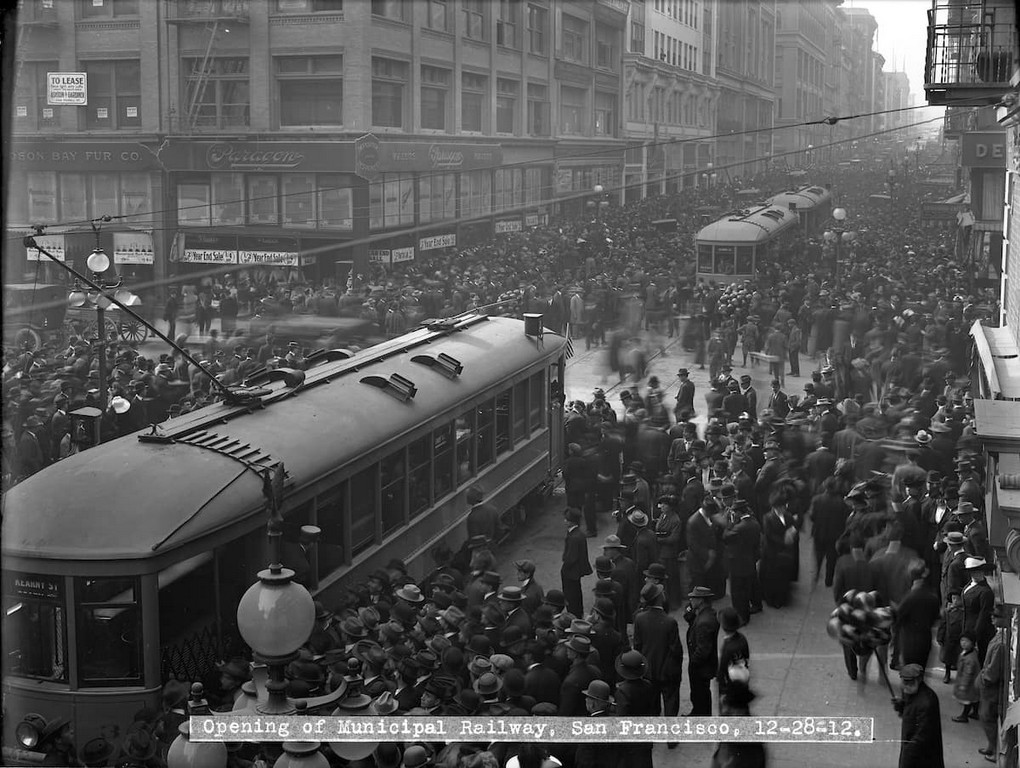San Francisco: A History Lesson
Published by Geri Speiler in Bay Area · 25 February 2023
BAY AREA
San Francisco: A History Lesson

By Wikimedia
With all the hullaballoo about "San Francisco Values," I decided to add some facts to the subject.
Many people who throw this phrase around know nothing of the history of the region and what makes a San Francisco native behave they way they do. With all due respects, the people of San Francisco are true settlers of this country helping to build America to what it is today.
Think about what it took to survive the journey? Read a little history to understand the true nature of a San Franciscan:
"The miners came in '49, the whore's in '51, they rolled upon the barroom floor, and created the Native Son"
-- an old San Francisco ditty, author unknown,
Many visitors reach San Francisco by driving up the magnificent coastal highways from the south that includes Highways 101 and 1. These roads essentially trace the route followed by Father Junipero Serra, the five foot two inch tall Catholic priest who, between 1769 and 1782, founded nine Catholic missions along the Nueva California coast.
For seventy years, Nueva California continued to be part of the territory owned by Spain, and then part of the Republic of Mexico after that nation declared its independence from Spain in 1810.
A July 9, 1846 name-by-name census document of the three communities collectively identified 290 residents. Including outposts, there were fewer than 400 people in the area.
On January 24, 1848, John Marshall discovered gold at Capt. John A Sutter's Saw Mill on the American Fork River as it was called then. As word got out, San Francisco, the nearest port and cross-country terminus to the gold fields, became a boomtown almost overnight.
In 1849, gold hunters poured into San Francisco by the thousands every month from all over the world; by the end of that year, the population soared from 400 people to 40,000.. San Francisco continued to grow rapidly through the balance of the 19th century, to 150,000 people in 1870, and almost 350,000 people in 1900.
Coming to San Francisco was not for the weak hearted or simple minded. Those who made it were the hardiest, luckiest, and most determined to survive the journey. The overland route, by covered wagon, took six months, following a winding 2,000 to 3,000 mile trail through prairies and deserts, and across the steep Rocky Mountains. Many died along the way from starvation, infection, flooded river crossings, contaminated water holes, and attacks by Indians or from other wagon trains out to steal provisions.
Despite the difficulties of the journey, people flooded in by land and sea by the thousands every month. The men who came out West to find gold didn't take the time to build anything more than basic living spaces. There was little time for any kind of community planning, or evolving ways to manage growth or supply services for city residents. Few cared about anything except getting to the foothills of the Sierra Mountains and finding gold; those not going out to pan for gold were focused on developing supply sources and services for the miners.
The streets were uneven, knee-deep in mud and dark at night as there were no streetlights yet. The hardy adventurers who came to San Francisco were, at first, almost all men. Men without families, without the leavening influence of mothers, wives, sisters, and daughters.
Parental authority figures to tame the wild behavior of the gold miners were not part of the landscape. Absent families, there was no one to tell the men how to behave, or how to use the correct fork, or how to require other men to treat women who could in other settings be their sisters. Displays of poor table manners, mismatched shirts and pants, and a lack of a civil tongue were common on the streets and in the saloons. There were more than 50 men to each woman.
When women did begin to arrive, many of them, in turn, were also adventurous - and their adventures were to provide female company and services to the men. Prostitution was flourishing in every major American city in the second half of the nineteenth century, but with the untamed and unbalanced nature of the growth of the gold [and then silver] adventurers in Northern California, and the easy virtue of that environment, brothels became a special and major factor in the evolution of the San Francisco landscape and soul.
Some women were disempowered, remaining in the lower echelons as they worked in the hastily constructed cribs of the back alleys of the Barbary Coast area; others gained an unprecedented ascension to power in San Francisco becoming real estate barons that their families carry to this day.
By 1900, the population of San Francisco had grown to 342,782, making the city the most populous in California and ninth most populous city nationwide.
The "personality profile" that began in 1849 of an independent-minded individualist carries on in San Francisco today.

